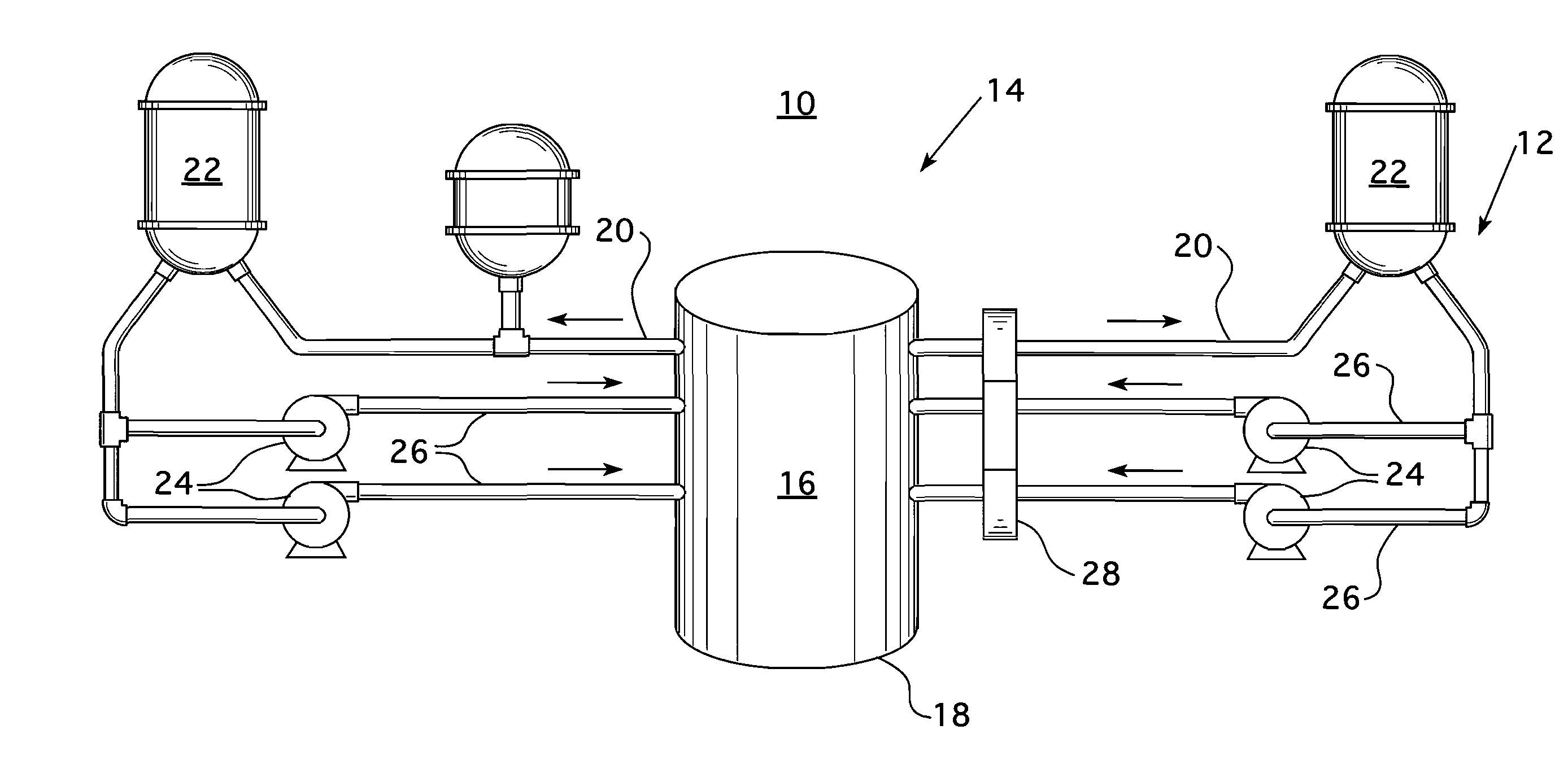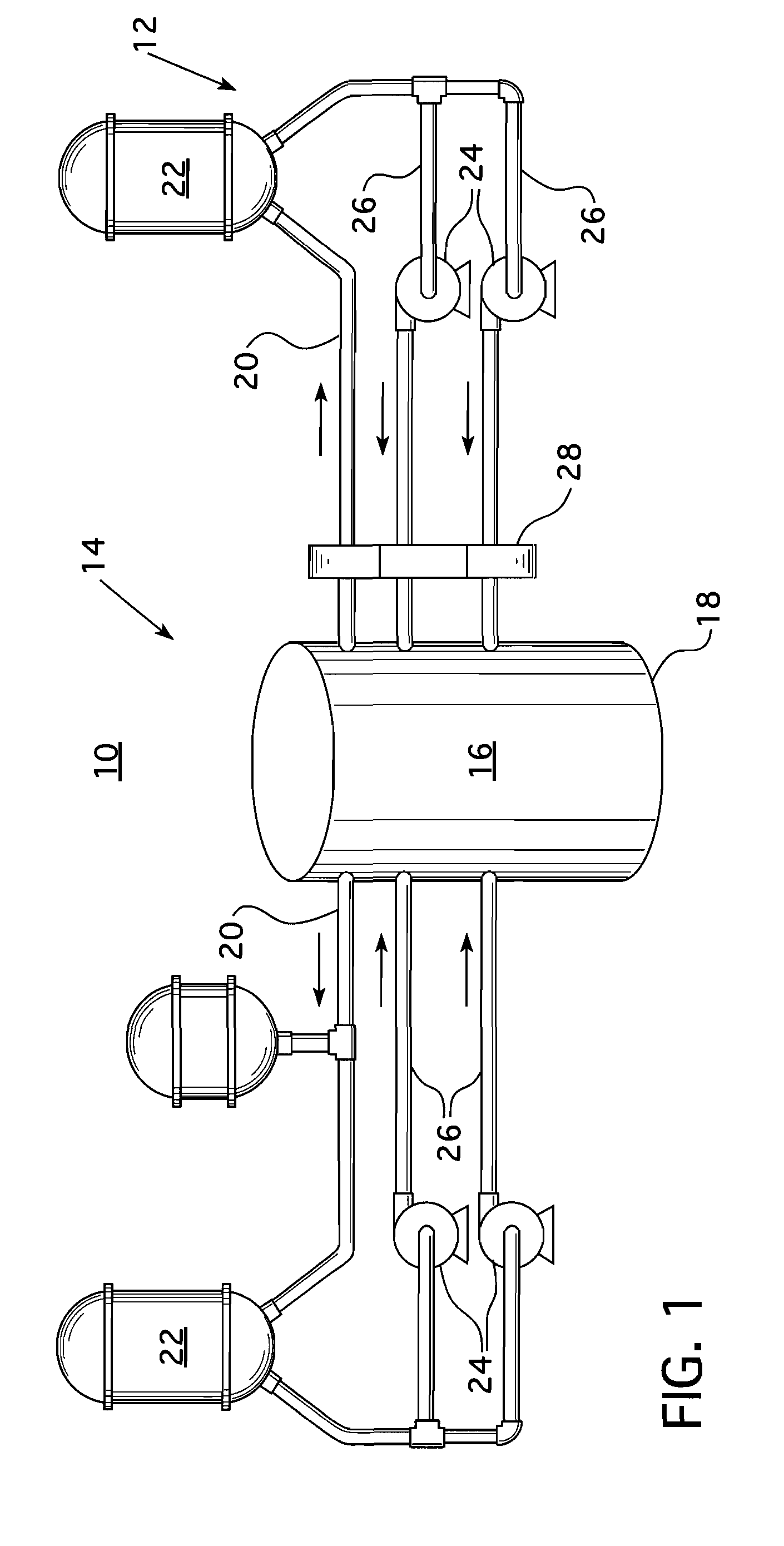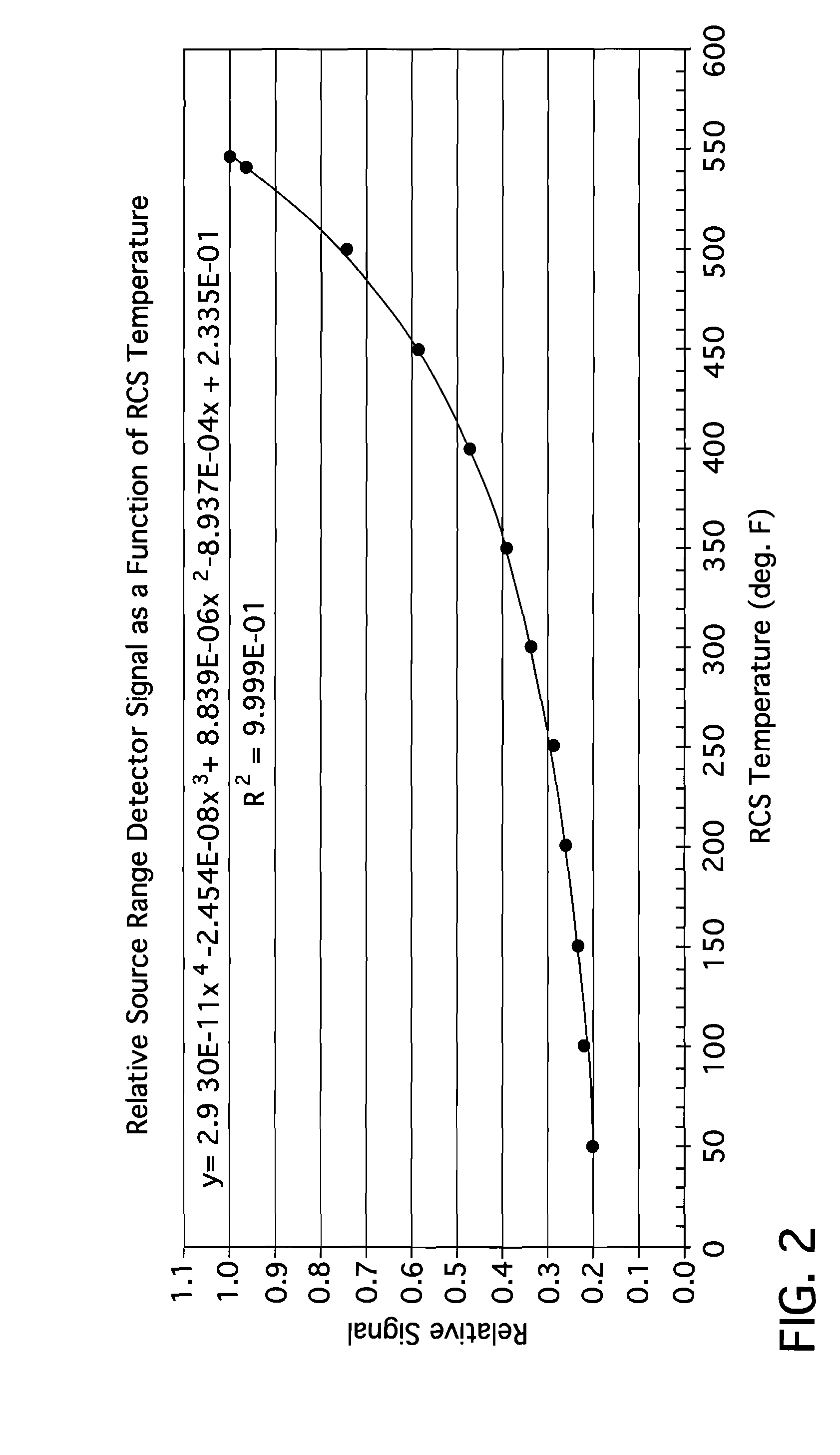Subcritical reactivity measurement method
a nuclear reactor and multiplication factor technology, applied in the field of subcritical reactivity measurement method, can solve the problems of general insensitivity to accurately detect low-level neutron flux emitted in the source range, no direct method for measuring when, and subject to much uncertainty
- Summary
- Abstract
- Description
- Claims
- Application Information
AI Technical Summary
Benefits of technology
Problems solved by technology
Method used
Image
Examples
Embodiment Construction
[0016]FIG. 1 illustrates the primary side of a nuclear electric power generating plant 10 in which a nuclear steam supply system 12 supplies steam for driving a turbine generator (not shown) to produce electric power. The nuclear steam supply system 12 has a pressurized water reactor 14 which includes a reactor core 16 housed within a pressure vessel 18. Fission reactions within the reactor core 16 generate heat, which is absorbed by a reactor coolant, like water, which is passed through the core. The heated coolant is circulated through hot leg piping 20 to a steam generator 22. Reactor coolant is returned to the reactor 14 from the steam generator 22 by a reactor coolant pump 24 from the cold leg piping 26. Typically, a pressurized water reactor has at least two and often three or four steam generators 22 each supplied with heated coolant through a hot leg 20, forming with the cold leg 26 and the reactor coolant pump24, a primary loop. Each primary loop supplies steam to the turbi...
PUM
 Login to View More
Login to View More Abstract
Description
Claims
Application Information
 Login to View More
Login to View More - R&D
- Intellectual Property
- Life Sciences
- Materials
- Tech Scout
- Unparalleled Data Quality
- Higher Quality Content
- 60% Fewer Hallucinations
Browse by: Latest US Patents, China's latest patents, Technical Efficacy Thesaurus, Application Domain, Technology Topic, Popular Technical Reports.
© 2025 PatSnap. All rights reserved.Legal|Privacy policy|Modern Slavery Act Transparency Statement|Sitemap|About US| Contact US: help@patsnap.com



